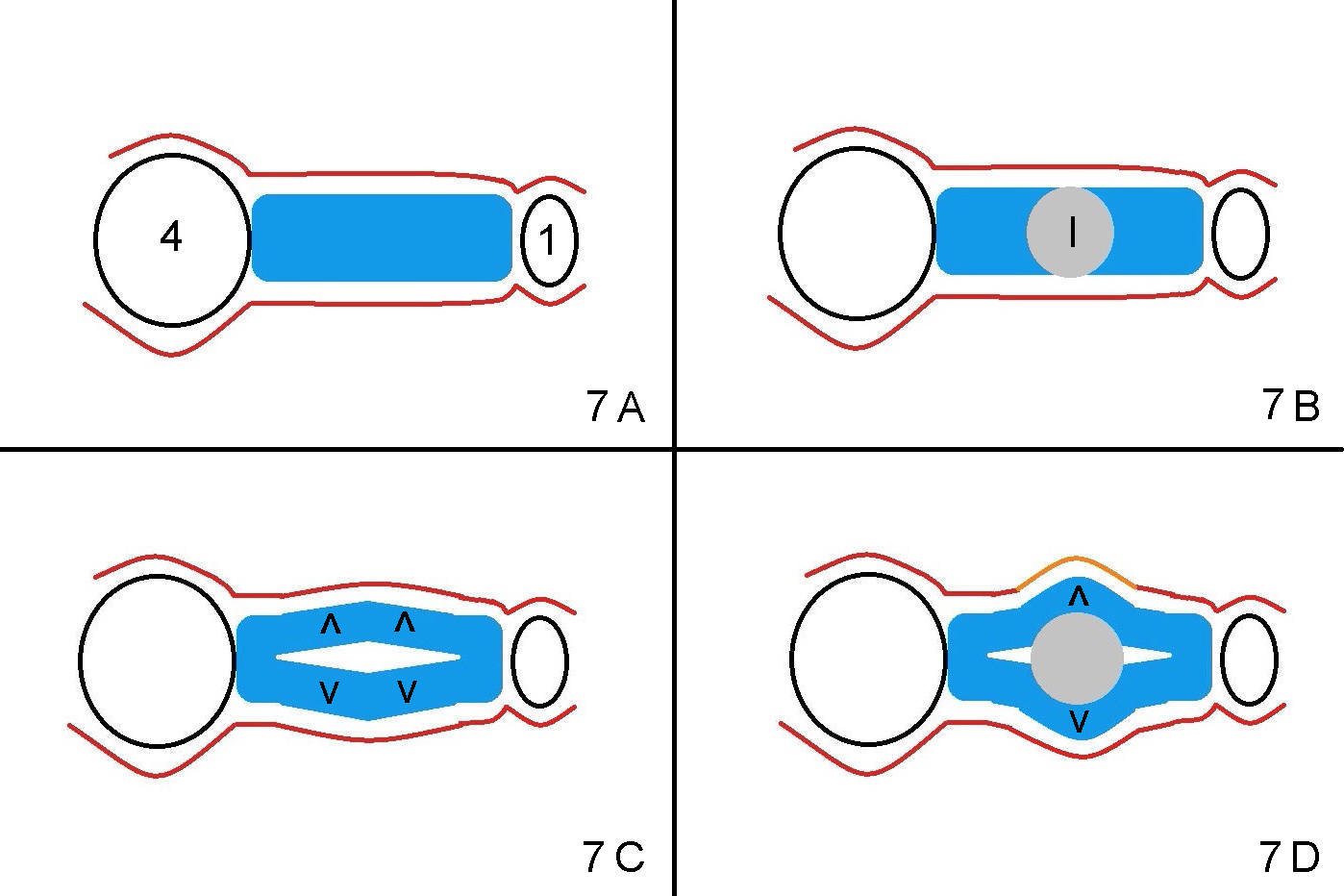
 |
Fig.7A is a cross section through the root and surrounding bone of the 1st premolar (4) and the lateral incisor (1) and the thin bone in between (blue area). The red line stands for the overlying gums. Wherever the root and bone are bulging, they push the gums out. If an implant (Fig.7B: I) with a diameter as wide as the bone is placed, it should be not stable. To let an implant survive, it should be completely buried inside the bone. To do so, we use a set of bone chisels (from thin to thick) to gradually expand the bone (Fig. 7C: arrowheads) and also make the bone more compact. The overlying gums are also bulging, i.e., pushed out by expanding bone. Surprisingly, our bone has certain degree of flexibility under gentle and constant pressure. Then small to large round chisels are used to expand the middle portion of the bone and finally an implant is inserted (Fig.7D). The bone and gums are pushed outward further (arrowheads). With bone expansion and condensation, the implant is completely buried inside the bone. Probably the bone is harder. It lays a solid foundation for implant function when bone heals and a crown is made. Return to main article
Xin Wei, DDS, PhD, MS 1st edition 09/05/2012, last revision 09/29/2012